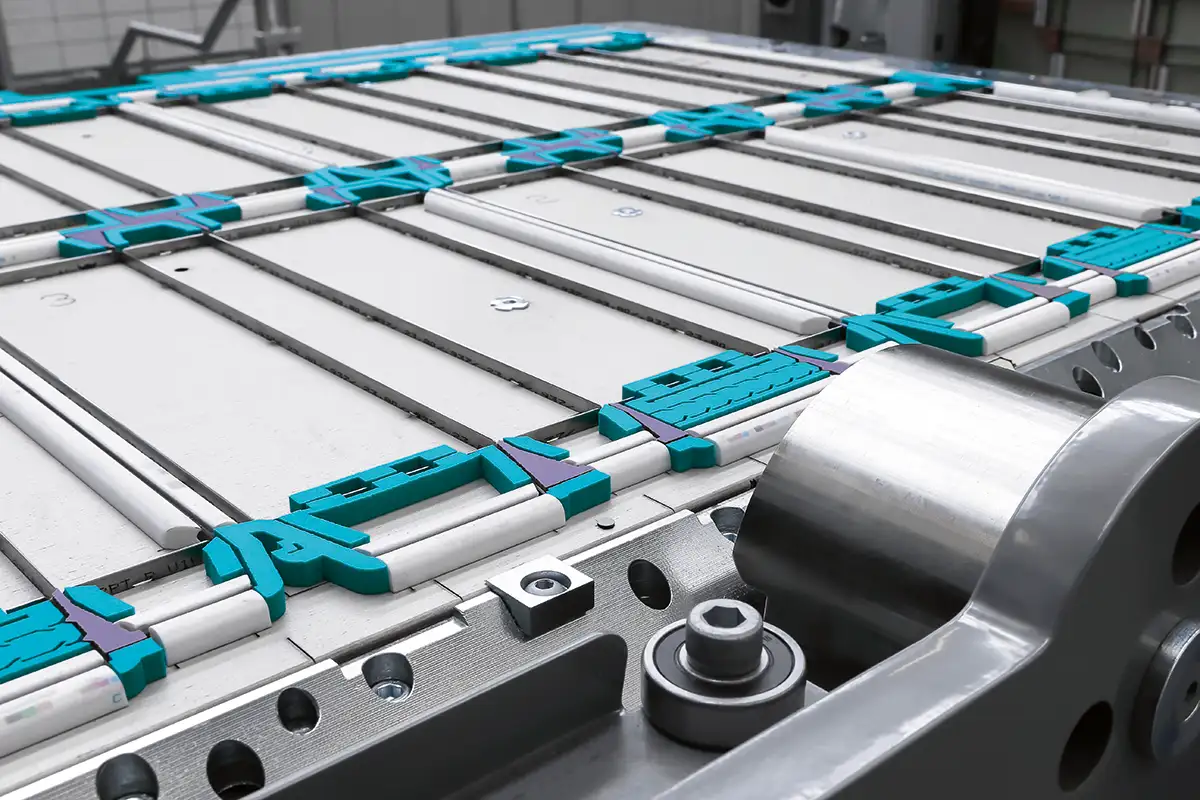
By Liz Stevens, writer, PostPress
From the earliest days in the folding carton finishing sector, there has been a push for greater output quantity, higher product quality, increased speed and improved efficiency. Each time a goal in one of these areas is achieved, the honeymoon is short-lived because, in the blink of an eye, another new goal crops up. Folding carton finishers perpetually strive for ways to better serve their customers and improve their profitability. Finishing hardware and software manufacturers work equally hard to provide new technologies and automation solutions to meet the emerging needs and overcome the latest challenges.
PostPress talked with printing and finishing equipment and automation leaders about the challenges they see arising for folding carton finishers, the automation and software solutions they offer for their customers, and the upcoming technology innovations they see on the horizon. PostPress is grateful to Bill Rice, product manager, postpress packaging at Heidelberg USA, Inc. (Kennesaw, Georgia); Doug Herr, director of sales, folding carton North America, Bobst North America, Inc. (Parsippany, New Jersey); Jeffrey Bates, national sales manager at W. H. Leary Co. (Tinley Park, Illinois); and Jan De Roeck, director industry relations & strategic marketing, Esko (Miamisburg, Ohio), for
their insights.
Challenges and solutions
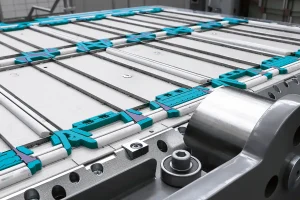
The challenges facing folding carton finishers run the gamut. There is the chronic lack of available, trained workforce candidates, but automation and software capabilities may offer some solutions. There is the inherent mismatch between printing press speeds and finishing equipment speeds; here, software for overall plant/job scheduling and individual department scheduling may be helpful. The relatively consistent nature of printing workflows versus the wildly variable nature of finishing workflows produces plenty of challenge but here, again, computerized aids for managing jobs, presses and finishing equipment can help smooth out the rough transitions.
The trend toward shorter runs, the demand for highest product quality, and the requirement to provide production data to customers – these certainly pose challenges. Technologies for streamlining makeready times, vision systems for ensuring superior product quality, and sensors and software for collecting and managing production run data can offer options for finishers. The rising price of energy, the still wobbly supply chain and the increasing costs of materials all add to a finisher’s list of items to address and manage, but good aids exist for finishers to run leaner and eliminate waste. And last but not least, a finisher’s aversion to updating or replacing equipment – and to spending the capital required – can be its own challenge. For this, the argument can be made that investing in equipment may give a company a competitive advantage and result in greater profitability.
Common challenges
Bill Rice, representing Heidelberg and its array of equipment and software solutions for the entire print-to-finish line, identified the challenge that exists in plants managing two systems – printing and finishing – which are sometimes viewed as a single job stream even though they have differing makeready tasks, makeready times and run rates. “The technology and software in our equipment can identify the best way to run a job through a particular machine,” said Rice, “but from one machine to the next, the job plan may not be consistent. A job schedule that might work well for the printing press is not necessarily the same order that would be ideal for running through the rest of the equipment.” Pushing a job through the plant based on the greatest efficiency for the printing press might lead to extended makeready times on the folder/gluer. Conversely, a great workflow for the folder/gluer (going from small and simple products gradually up to the larger products) would reduce the makeready times but that might disrupt the workflow coming out of the
printing press.
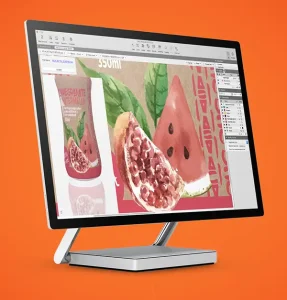
Rice offered two solutions: Heidelberg’s “Push to Stop” philosophy and the company’s Prinect software packages. “In dealing with the two sides of the printing-finishing line,” said Rice, “it ends up being a compromise. In the scheduling and planning of the production floor, it is important to get as much efficiency as possible through every process.” Heidelberg’s Prinect Workflow software offers management tools from web portals for communicating with customers to costing, job creation and planning, production management, and production and business reporting. “The other solution component is Heidelberg’s manufacturing philosophy: Push to Stop,” Rice said. “It is a way of working, using software and hardware, so that when the plant starts up for the day, everything is pre-organized based on efficiencies. The system starts the first job and then automatically goes from one job to the next, and human operators don’t get involved in changing that flow and schedule unless there is a problem.” Rice stressed that planning and scheduling are the foundation for getting a job through the whole plant as efficiently as possible. “We are seeing tremendous success in companies that are able to manipulate some of that,” he said. “We have seen the biggest success in plants that are able to look at the finishing side of things and manage that best because that is really the most labor-intensive part of the operation, whereas on the printing press side, there is so much technology built into the presses that it is possible to have very good makeready times even if some of the press’s efficiencies are disrupted.”
At Bobst, which offers substrate processing, printing and converting equipment and services, Doug Herr said that longstanding challenges stem from several issues. “Run lengths are becoming shorter,” said Herr, “turnaround times for the client are becoming shorter, and margins are tight as always. So the efficiencies of the converting equipment are extremely important; they are critical to profitability. Our customers’ customers – the brand owners, for instance – expect a higher percentage rate of quality product; in other words, fewer defects are important. And more and more frequently, brand owners want production data and data relative to the number of imperfect products produced. In the pharmaceutical industry, for example, they need to closely track the production of the product, including the packaging, so that each item and each lot have a specific code which can be tracked back to the manufacturer.”
Herr sees solutions that include upgrading or replacing hardware and adding software. “Older equipment,” Herr explained, “although it can still perform, often doesn’t include the software and capabilities which are built into new machinery to give customers information and quality assurance in an efficient way.” Herr used diecutting as an example. “Diecutting is an area where Bobst has made a number of improvements and introduced new equipment and related support products. We now offer a HMI 22″ (Human-Machine Interface) touchscreen; this is the control module, the brain of the equipment. We also offer Recipe Management, a program that can save up to 5,000 of our customers’ jobs and all of the parameters of those jobs.” Herr mentioned a third diecutting enhancement – TooLink, a chip which is embedded into the diecutting die so that when the tool is slid into the machine, job-specific information is transferred automatically to Recipe Management. “By the same token,” he said, “production information relative to a specific job, such as number of impressions, the number of times that job has been inserted into the machine, the number of times that job has been run utilizing that tool, are kept on the microchip embedded in the die.” Bobst now also offers a Digital Inspection Table, a standalone machine for checking the quality of a full sheet. “A quality assurance (QA) individual can inspect the print,” Herr explained, “to check the color or position, to check for missing copy or – with diecutting – to look for a poor score, an incorrect score or a missing score.” Bobst recently introduced Accucheck 2, a module positioned after the feeder’s blank alignment device on a folder/gluer, for example. Accucheck 2 has cameras which read the copy on each individual blank, check for incorrect color, missing color, missing type. The module can check creases, and can read imperfections in stamping, embossing and other embellishments.
Jeff Bates, with W. H. Leary, a maker of quality assurance, glue application and mechanical solutions for the packaging industry, reported that the biggest challenge his company has seen for folding carton workflow is the continued lack of skilled or even unskilled labor, which has been made even worse by the COVID-19 pandemic. “I think the factories learned a lot from COVID,” said Bates. “It definitely affected a lot of factories; they now have to start looking more towards innovation and automation for the future.” According to Bates, a lot of plants have acknowledged that skilled workers do not exist and now are just looking for people who can run the lines and keep them going. “More or less,” Bates, said, “they just want someone who can push a start button and a stop button.”
Leary has addressed the skilled workforce scarcity by building more features into its solutions. “Our software, Monet, is a pictorial system that we created 10 years ago, and we have improved it to change with the times,” said Bates. “With Monet, operators can just look at the graphics and understand whether they are shooting dots or shooting a line of glue, and they can see where the tolerances need to be from a quality standpoint.” The system also displays bar codes so that operators can verify that the code on the cartons matches the code on the computer screen.
“Operators can verify what they are running, guarantee that it is top quality and, at the end of the job, they can save the job info,” Bates explained. “All of the settings are saved now so it makes the makeready times shorter for repeat jobs and the quality specs are saved, too.” To further ensure quality, the Monet system includes password protection that prevents operators from making unauthorized quality spec changes. “Plants are taking product quality much more seriously these days,” said Bates. “Once a job’s quality specs are transferred to our system and password protected, no one other than a manager or somebody from the quality department can
make changes.”
Leary has added QA sensors to its hardware and the company’s Monet system has evolved to handle more quality assurance features. “Our QA focus used to be just looking for glue, looking for bar codes and scanning for missed copy,” Bates said, “but many companies now are starting QA all the way up at the feed. They are looking for doubles that are coming out of the feed, they are looking for skew and any bent flaps.” Leary’s system also now collects more production data and offers equipment troubleshooting features. “When there is a mechanical problem, the customers want us to guide an operator to a specific area on the machine to look for a problem and make a fix,” said Bates. “Helping customers pinpoint problems on the machinery is important since this can eliminate a lot of downtime.”
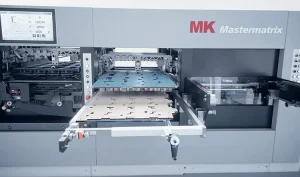
At Esko, which provides integrated software and hardware solutions for packaged goods, Jan De Roeck sees several challenges. “As the packaging industry continues to grow and adapt to the very real threats of today,” said De Roeck, “supply chain volatility, labor shortages and rising consumable and energy costs all underline that converters need to accelerate their search for increased efficiencies throughout the workflow.” De Roeck pointed to efficiency as the biggest benefit of a standardized workflow and identified standardization as being the necessary foundation of any successful automation. “Although the entire packaging sector faced unprecedented challenges in the last two years,” De Roeck said, “Esko has continued to focus on developing new technology, ensuring customers remain at the forefront of productivity, efficiency and innovation gains and are supported on their digital transformation journey.”
Esko believes that successful digital transformation means more automation, more cloud computing and more integration between disparate systems. “In the face of the disruptive market trends in the industry, we continue to work closely with our customers,” De Roeck explained, “listening and developing innovations that respond to demands and deliver tangible benefits. That’s why we recently launched a series of innovations to empower businesses to improve ways of working, eradicate waste and optimize operational processes.” Esko Release 22.07 includes new features such as Cape Pack for cloud-based palletization and logistics optimization workflow, Automated Packshots for creating hyper-realistic packaging images, ArtPro+ for print unit support and repeat layout creation, and more.
De Roeck also brought up the challenge for finishers of taking on capital investments. “Innovation and change are inherent in any packaging business but driving and implementing that innovation is a challenge that can sometimes be difficult to achieve,” said De Roeck. “Many businesses, in the face of challenging market conditions, insecurity and volatility, freeze investments in response. However, the opposite reaction is more appropriate. Investing in accelerating digital transformation maintains competitive advantage and efficiently deals with profitability pressures. We also know it is equally important that these innovations are integrated quickly and smoothly to ensure businesses achieve demonstrable improvements and a speedy return
on investment.”
Challenges created by shorter runs
The increasing tendency of customers to request shorter runs of folded carton jobs is a challenge that all of the industry representatives recognized. “That is a challenge that everybody is facing,” said Heidelberg’s Bill Rice. “The way we respond to that is we try to build in as much technology into the equipment to reduce makeready times.” Rice pointed out that, as an example, splitting a previously routine run of 500,000 pieces into short runs of 50,000 pieces balloons one makeready time into 10 makeready times. “The estimating department now is having to add in those additional makeready times. We encourage folks to build those costs into their price because everybody is going to the much shorter runs.” This type of change also calls for input from equipment suppliers. “It is really a situation where OEMs, like Heidelberg, can work with production floor people to help them use the technology that they have properly and efficiently. In some cases, it means recommending that they buy additional software packages or workflow implementations that will help them operate better.”
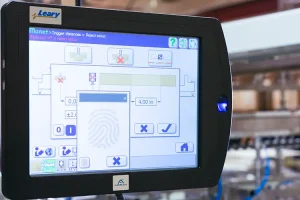
Leary’s Jeff Bates offered an alternative solution to responding to the demand for shorter runs. “A lot of the plants that I have dealt with for years used to run maybe three or four days,” explained Bates, “and they would just put a card in on the machine – a side stream structure card – to eat up board.” But with board now being a hard-to-source commodity, some customers are looking at switching over to the upper end work – shorter runs but with cartons that are worth more money. “This might take them back into the pharmaceutical and the cosmetic lines,” Bates said, “but with board being as scarce as it is in the industry, that’s what a lot of these companies are looking for – the shorter runs, the more expensive cartons.” This, however, puts pressure on finishers to find the right opportunities for operators that can do these types of makereadies. “The automation with our equipment is really helping these companies turn short-run jobs into a profitable business model.”
New technology solutions in the offing
Though the future is unknowable, equipment manufacturers do their best to predict trends and design features for the next anticipated requirements. According to Doug Herr, Bobst will focus on increased automation, preventative maintenance and the flow of data between machines and software, among other priorities. “Bobst is automating more and more of our equipment so that the setups on the machine are more consistent and the length of setup times continues to fall,” said Herr. “Our PackMatic Plus, recently introduced, provides quicker changeover times and more automation to set up machines much faster, with less skill.”
Bobst sees the demand for data driving future solutions. “Data is really key, whether it is downflow of data from machines or upflow of data to the equipment,” Herr said. “That is going to continue to be extremely important for upping productivity and for facilitating preventative maintenance.” Bobst’s Connect Essential, a subscription service, will help finishers maintain and troubleshoot their equipment. “If a customer has a problem where a machine overheats or stops or isn’t producing at the levels it should,” said Herr, “the customer can access remote diagnostics through the internet and communicate with a Bobst professional. We can possibly avoid sending a service person out by identifying problems which the customer can rectify. And if a repair part is required, we can order the part to be delivered a day or two later, versus sending a service person out to locate the problem and then order a part. There will be tremendous decreases in downtime with Connect Essential.”
Heidelberg’s Bill Rice commented on the company’s plans for its finishing equipment and software. “What we have seen because of COVID-19, because the workforce is depleted and it is difficult to hire new employees whether skilled or unskilled, is a trend of more companies looking into automation,” said Rice. “We have a lot of existing automation in this area already, but a stumbling block for some customers has been the price point for added features such as collecting data and managing the production process with things like pre-sets. The newest diecutter in our fleet is the Mastermatrix; it has pre-sets for things that are done automatically on the machine based on the data flowing into it. On our folder/gluers, we have auto-set technology; at this point it is not tied into the Prinect workflow system but that is an upcoming development that Heidelberg will offer.” In today’s environment, Rice expects more customers to see the value of automating workflow as well as the value of data collection and information flow. “All equipment manufacturers are trying to make the technology much more affordable. We think that customers also will be more willing to spend money on these features to replace the (now unavailable) labor that was required to do things the manual way.”
At Leary, Jeff Bates described his company’s future innovations. “For us, it will definitely be automation,” said Bates, “including being able to set jobs up and adding more integration with the OEM machines. We know the future is automation, and with automation comes an increase in demand for vision-based inspection systems.” Bates chalks up the future’s demand to a shrinking workforce. “It is no longer the case that facilities can count on having three or four people at the back of the lines, and two people at the front of the lines feeding the cartons. They just can’t get the headcount that they used to be able to rely on.”
Bates offered his opinion on how the COVID-19 pandemic has spurred change in the industry that actually has been needed for some time. “I think the pandemic caused a lot of companies to pay more attention to tightening up productivity because so many people would get COVID-19 in one week,” he said. “Instead of having just onesies and twosies out sick, plants had half of an entire department out, to the point where it really stressed the ability to get production done. This definitely did wake up a lot of people.”
The industry already had known it had a problem, but the pandemic got a lot more companies thinking and strategizing. “Companies realized that they had not invested much money into finishing; they had concentrated on investing money into printing,” Bates explained. “Now these companies are thinking that they must start investing more money in this last process that they have in their plants because where they used to have plenty of people, the workforce is just not there anymore and it’s not returning. Frankly, I don’t foresee it ever coming back.”
For more information, visit www.bobst.com, www.esko.com, www.heidelberg.com and www.whleary.com.

